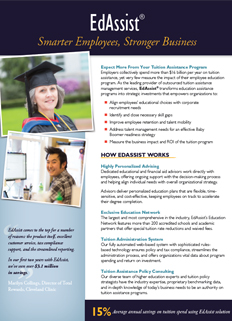In your quest to become an employer of choice, you likely seek the inside scoop on the competition. The Society for Human Resource Management's (SHRM) annual Benefits Survey, which was recently released, provides a behind-the-scenes look into what benefits employers of varying sizes offer their employees. The survey revealed that on average companies spend 31 percent of payroll on total benefits costs ' 16 percent on mandatory benefits and 15 percent on voluntary benefits. But, specifically how are they spending it? SHRM polled its 200,000 member to find the answers.
SHRM listed 220 benefits and asked human resource professionals to indicate whether they offered the benefit and, if not, whether they planned to offer it in the next year. In the category of work/life, SHRM considered family-friendly, personal services, health care and wellness, and leave benefits. The report also included detailed analyses of housing and relocation benefits, financial and compensation benefits, business travel benefits, and other programs.
Benefit 2005 2006 Well-baby program 40% 83% Prenatal program 25% 82% Chiropractic insurance 56% 81% Contraceptive coverage 82% 75% Vaccinations on site 56% 65% Cancer insurance 28% 36% Rehabilitation assistance 28% 35%
For more details and data, visit SHRM Online at www.shrm.org.
SHRM listed 220 benefits and asked human resource professionals to indicate whether they offered the benefit and, if not, whether they planned to offer it in the next year. In the category of work/life, SHRM considered family-friendly, personal services, health care and wellness, and leave benefits. The report also included detailed analyses of housing and relocation benefits, financial and compensation benefits, business travel benefits, and other programs.
Family-Friendly Benefits
The top three family-friendly benefits revealed in the survey were dependent care flexible spending accounts (76 percent), life insurance for dependents (65 percent), and flextime (57 percent). Telecommuting on an ad-hoc basis ranked fourth at 45 percent. Compressed work week and health care benefits for dependent grandchildren tied for fifth place at 35 percent. Several benefits experienced a sharp shift in frequency in the past year. Telecommuting on a part-time basis dropped from 37 to 26 percent. Scholarships for employees' family members dropped 8 percent. However, emergency/sick child care leapt from 6 to 14 percent.Personal Services Benefits
Professional development opportunities and professional memberships were the clear leading benefits in this category, ranking at 95 and 90 percent respectively. Casual dress day ranked third at 62 percent, and cross-training to develop skills not directly related to the job was listed at 49 percent. In fifth place was free/discounted uniforms at 32 percent. Organization-sponsored sports teams, executive club memberships, and legal services all ranked just under 30 percent. Casual dress day experienced the sharpest increase jumping 7 percentage points since 2005.Health Care and Wellness Benefits
The most popular benefits in this group were prescription drug coverage (96 percent) and dental insurance (93 percent). Mail-order prescription programs (88 percent), preferred provider organizations (87 percent), and well-baby programs (83 percent) followed. Additionally, 75 percent offer contraceptive coverage. Vision and mental health insurance are offered equally at 73 percent. Many benefits in this category experienced sharp shifts in popularity, several related to reproductive health and/or child care.Benefit 2005 2006 Well-baby program 40% 83% Prenatal program 25% 82% Chiropractic insurance 56% 81% Contraceptive coverage 82% 75% Vaccinations on site 56% 65% Cancer insurance 28% 36% Rehabilitation assistance 28% 35%
Leave Benefits
The leading benefits in this group were paid holidays (98 percent), paid jury duty (93 percent), and paid bereavement leave (91 percent). These were followed by long-term disability (86 percent) and paid vacation (82 percent). Just 50 percent offer paid personal days. Paid time off plans, which include sick, vacation, and personal days all in one bank, dropped to 53 percent from 60 percent in 2005. Paid release time for volunteering leapt from 13 to 20 percent this past year.For more details and data, visit SHRM Online at www.shrm.org.





